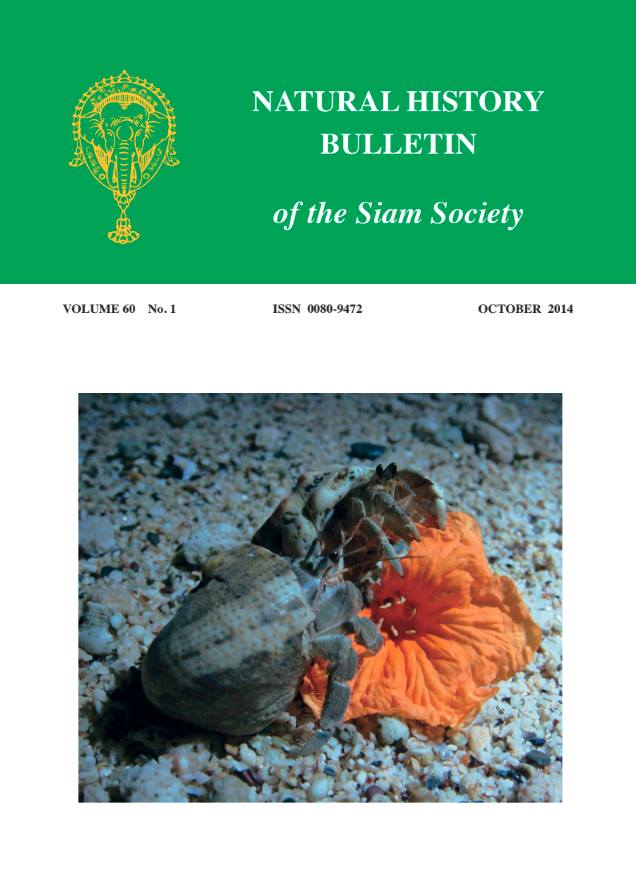Population Ecology of the Land and Hermit Crab CPopulation Ecology of the Land Hermit Crab Coenobita rugosus (Anomura, Coenobitidae) at Cape Panwa, Phuket Island, Andaman Coast of Thailand.
Main Article Content
Abstract
The population structure, density, dispersion, sex ratio, diet and reproductive activity of Coenobita rugosus at Cape Panwa, Phuket Island, Andaman Coast of Thailand were investigated from April 2011 to March 2012. Crabs were collected monthly by hand by multiple quadrat sampling. Tendency of unimodality of annual size frequency distributions were observed for males, non-ovigerous females, and ovigerous females. Major chela length was determined quantitatively as a secondary sexual character (larger in males) for the first time in terrestrial hermit crabs. The average density of C. rugosus during the study period was 6.98 ± 0.36 crabs/m2 . Dispersion of males and non-ovigerous females of C. rugosus was clumped, whereas ovigerous females were distributed uniformly in most sampling months. The overall sex ratio was male-biased (1:0.86 male:female). Nevertheless, the monthly and size class sex ratios were close to the expected 1:1 ratio. Individuals of C. rugosus were observed to consume 16 plant species, mostly decomposing leaves and flowers, but three species of animal carcasses including one case of cannibalism were noted. Reproduction of C. rugosus occurred throughout the year with the highest percentage of ovigerous females in April and September (31.2% and 31.6%, respectively). The characteristics of C. rugosus living Cape Panwa, Phuket Island are consistent with those of hermit crabs inhabiting other constant tropical environments.


